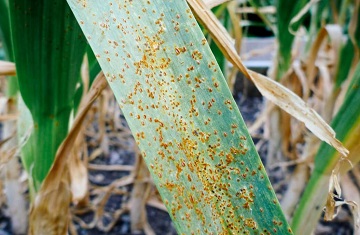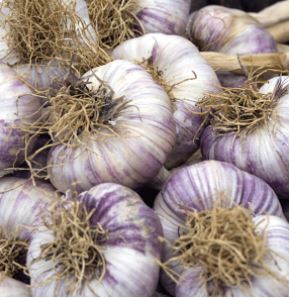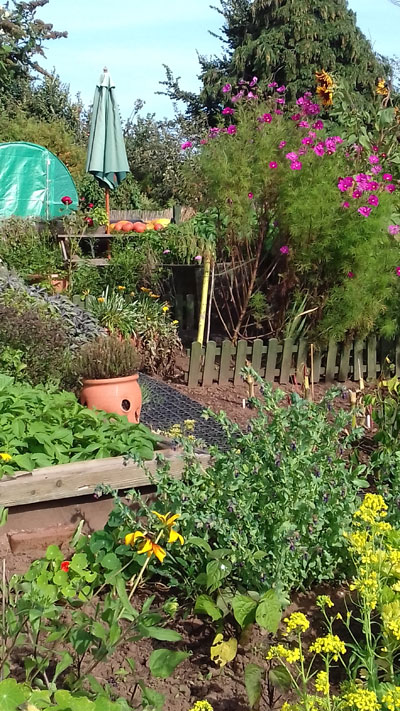
It doesn't seem that long ago that I pulled up my garlic - I think the days have all rolled into one at the moment because it was June. I pulled them up slightly earlier than normal because I had a rather splendid case of rust on them. It is an airborne fungus and can appear on any of the allium family. I sometimes get it on my leeks but not my onions for some reason. So, as garlic planting time is coming up, I thought I would investigate ways to try and reduce rust.

Here are 5 things to try:
- It seems that rust attacks are worse on nitrogen rich soil which has low potassium. Ways in which potassium can be added to compost heaps are wood ash and coffee grounds. I probably don't eat enough bananas to make a difference to the heap at the allotment. Other methods are to grow comfrey and put that in your compost heap in several layers and of course there is seaweed. I don't have the time to change my compost heaps, although they do have comfrey on them, so this year it will have to be seaweed and longer term, build my compost heaps with more comfrey. I do also have some rotted down wood chips on my paths which I could mulch the bed with once the garlic is planted.
- Good air circulation is important. I did squash my garlic in quite close to each other so greater spacing is needed. For the last two or three years I have multi-sown leeks, 2 or 3 to a block, and I wonder if this is too close together. I may go back to single-sown leeks. Apparently, if garlic is spaced at 30cm, the likelihood of rust is much reduced.
- Don't plant garlic too late. The bigger it is before rust hits it, the greater the chance of obtaining cloves that are a reasonable size. Spring is the key time for rust so you want your garlic to be well on its way. Having said that, last winter was very wet and I do wonder if the rust started then. You just can't win! According to the website Crocus, Early Purple Wight garlic grows very quickly so it could be planted early, grown quickly and then pulled by May which is when rust really gets going. I see that this variety of garlic is available in the Kings catalogue so I will try some this year.
- Don't plant garlic in a block but spread it out amongst all the other vegetables. It might still become rusty but there is a chance some will miss it. I have grown garlic in my polytunnel in the past but stopped because it was the only crop in there that needed regular watering and I just wasn't down at the plot often enough over winter.
- As soon as you notice rust, trim the leaves off if the day is hot and still. If it isn't a bad attack, the plant will be alright and will grow more leaves. If not, it will get rust again!
And finally, if the rust attack is bad and the crops are small, pull them up and dispose of them. I must admit to putting rust-ridden leaves in the compost heap because the spores are air-borne not soil borne but know that not everyone will want to do that. A friend pulled up her rusty garlic, removed all the rust and then minced the small cloves and green tops in a food mixer and froze it in ice-cube blocks to use in cooked meals. It is certainly one way to avoid wasting a crop.
How do you deal with rust?
